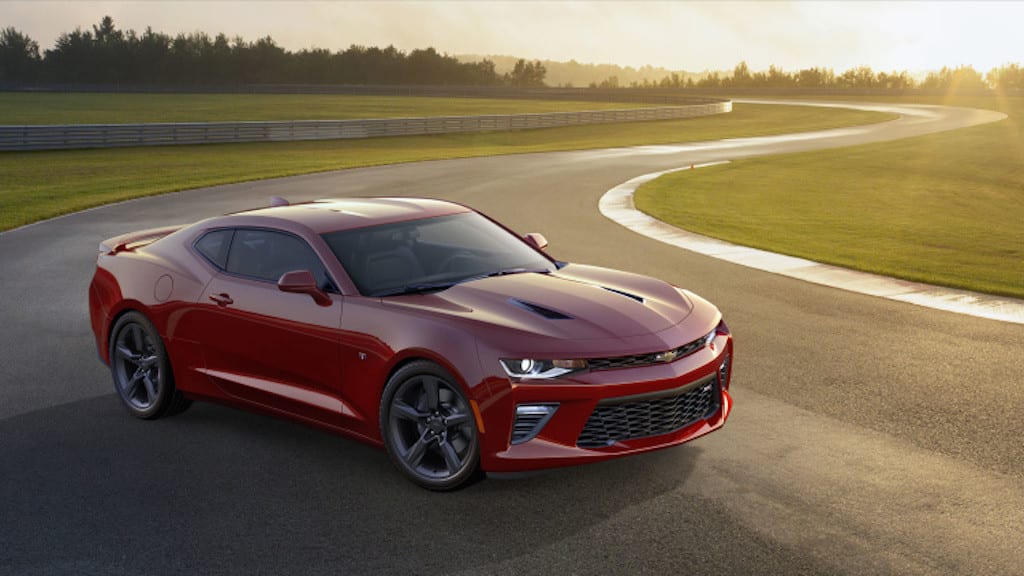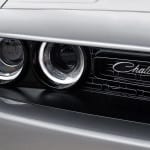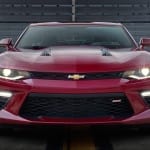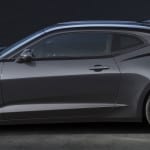Introduced in May of 2015, the 2016 Chevrolet Camaro has been redesigned to appeal to customer’s requests. The sixth-generation model underwent some notable improvements from it’s predecessor, including a smaller (and more desirable) frame, a lighter curb weight and upgraded interior designs. As a result, Chevy is convinced they’ve created their best Camaro yet.
“We have had the incredible opportunity to meet literally thousands of Gen 5 Camaro owners who provided direct feedback on what they loved about their car and what they wanted for the next-gen Camaro,” said Camaro’s chief engineer Al Oppenheiser (via GMAuthority.com). “As a result, the 2016 Camaro builds on what made the current Camaro such a success with more power, more agile handling and more technology.”
Of course, the company didn’t have much to worry about. They sold 86,297 units in 2014, which is far and away the best among pony cars. The second best-selling sports car was the Ford Mustang, which sold 3,662 less units. Adding to the allure of the 2016 Camaro will be the introduction of a new generation, while the sixth-generation of Mustangs were introduced in the 2015 model.
Since the 2015 Mustang and 2016 Camaro are both the start of a new generation of sports cars for each of their respective brands, let’s see how they compare to each other. I won’t give away spoilers, but I’ll just say this: you’ll be itching to visit your Chevrolet dealers in Miami after reading this post…
Engine

The V6 engine on the 2015 Mustang is capable of producing 300 horsepower and 280 lbs-ft of torque. These specs are all produced via a car that weights an estimated 3,526 pounds. Meanwhile, the Camaro’s V6 is capable of delivering 335 horsepower and 284 lbs-ft of torque. While the car’s curb weight hasn’t been announced, the company did note that the 2016 vehicle will be at least 200 pounds lighter than the 2015 model. Considering the weight of last year’s car, we can estimate that the 2016 V6 will weight about 3,520 pounds.
When it comes to the 4-cylinder engines, Ford’s 2.3L EcoBoost is able to reach 310 horsepower and 328 lb-ft or torque. The Camaro’s turbocharged 2.0L engine is projected to produce 275 horsepower and 295 lbs-ft of torque. The weight of the two sports cars should be comparable, with the Camaro projected to be about 30 pounds lighter. These specs may not favor the Camaro, but wait until you see what Chevy’s 4-cylinder engine’s fuel economy is.
Finally, in the V8 muscle car class, the Ford’s 5.0L engine delivers 435 horsepower and 400 lbs-ft of torque, all packed into a 3,729 pound vehicle. The Camaro SS will feature an LT1 V8 that can reach 455 horsepower and 455 lbs-ft of torque. Those specs would make the Camaro the most powerful SS of all time!
Interior

The instrument panel includes a pair of eight-inch screens; one provides the driver with information like navigation and performance, and the other provides the drivers with the next-generation MyLink system. Among the other features include redesigned heating and cooling controls (making it significantly easier to adjust), a new electronic parking brake, and a segment-first LED ambient lighting system. This isn’t just any LED system, as drivers have a choice of 24 different colors to run through their interior. If the driver wants, they can even opt for a light show!
The Mustang has also seen improvements to it’s interior. However, considering the negativity that surrounded the 2014 version, any slight upgrade would probably be embraced. Of course, many of the more-desirable features and technology are optional, available for additional money.
Exterior

Chevrolet achieved these alterations by completely overhauling the Camaro’s design. This allowed the manufacturers to take a step back and analyze what was working and what wasn’t. Essentially, they were able to borrow their favorite ideas from other cars and incorporate the concepts into their new 2016 sports car. The two parts that carried over? Basically the bowtie emblem on the back, as well as the SS badge.
Economy

For comparisons sake, the manual Mustang is capable of 26 combined mpg (22 city and 31 highway), while the automatic will provide 25 combined mpg (21 city and 32 highway). Granted, we still don’t know the Camaro’s specific specs, but it’s a safe assumption that they’ll at least top the Mustang!
When it comes to the car’s starting price, Mustang would appear to have the upper hand. The 2015 model topped the list in US News’ ranking of the most affordable sports cars, while the 2015 Camaro placed sixth. Still, it’s evident that the Camaro’s reasonable price tag has resulted in the vehicle being the best-selling pony car on the market.
Plus, since Chevrolet has slowly been leaking their specs, there’s really no guessing what the 2016 Camaro’s starting price will be. When comparing both the 2015 Camaro and the 2015 Mustang, the Ford product ends up being a few hundred dollars cheaper (in regards to a bare-bone vehicle). However, some, including GMAuthority.com, have estimated that the 2016 Camaro could start around $20,000. Meanwhile, the Mustang starts around $23,800.
We may be jumping the gun a bit with these projections. Based on some respected sources, though, it looks like the Camaro may actually be the cheaper buy.
So what did we tell you? In the battle of the sixth-generation sports cars, the 2016 Camaro clearly tops the 2015 Mustang. I’d expect the Chevy to hold the reigns even following the release of the 2016 Mustang. Models rarely see many changes, except when the company decides to switch up the “generation.” Considering Mustang just recently transitioned into a new “generation,” it’s safe to say that the car isn’t changing much in the near future. Therefore, Camaro will continue to be our winner.





